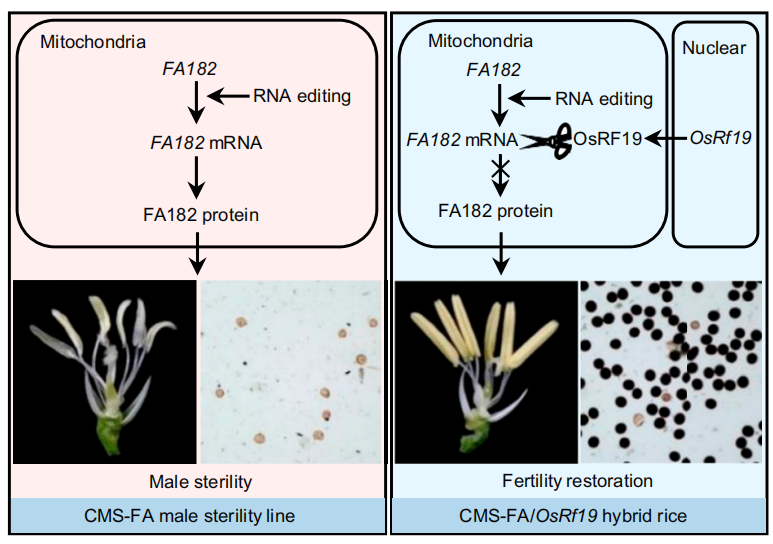Fujian cytoplasmic male sterility and the fertility restorer gene OsRf19 provide a promising breeding system for hybrid rice
Authors: Haichao Jiang, Qing Lu, Shuqing Qiu, Huihui Yu, Zhengji Wang, Zhichao Yu, Yunrui Lu, Lei Wang, Fan Xia, Yuying Wu, Fan Li, Qinglu Zhang, Gang Liu, Dingding Song, Chonglie Ma, Qi Ding, Xiaobo Zhang, Lin Zhang, Xuetang Zhang, Xu Li, Jianwei Zhang, Jinghua Xiao, Xianghua Li, Naiyuan Wang, Yidan Ouyang, Fasong Zhou, and Qifa zhang
PNAS. August 15 2022.
Abstract: Cytoplasmic male sterility (CMS) determined by mitochondrial genes and restorer of fertility (Rf) controlled by nuclear-encoded genes provide the breeding systems of many hybrid crops for the utilization of heterosis. Although several CMS/Rf systems have been widely exploited in rice, hybrid breeding using these systems has encountered difficulties due to either fertility instability or complications of two-locus inheritance or both. In this work, we characterized a type of CMS, Fujian Abortive cytoplasmic male sterility (CMS-FA), with stable sporophytic male sterility and a nuclear restorer gene that completely restores hybrid fertility. CMS is caused by the chimeric open reading frame FA182 that specifically occurs in the mitochondrial genome of CMS-FA rice. The restorer gene OsRf19 encodes a pentatricopeptide repeat (PPR) protein targeted to mitochondria, where it mediates the cleavage of FA182 transcripts, thus restoring male fertility. Comparative sequence analysis revealed that OsRf19 originated through a recent duplication in wild rice relatives, sharing a common ancestor with OsRf1a/OsRf5, a fertility restorer gene for Boro II and Hong-Lian CMS. We developed six restorer lines by introgressing OsRf19 into parental lines of elite CMS-WA hybrids; hybrids produced from these lines showed equivalent or better agronomic performance relative to their counterparts based on the CMS-WA system. These results demonstrate that CMS-FA/OsRf19 provides a highly promising system for future hybrid rice breeding.
Full article:https://doi.org/10.1073/pnas.2208759119
